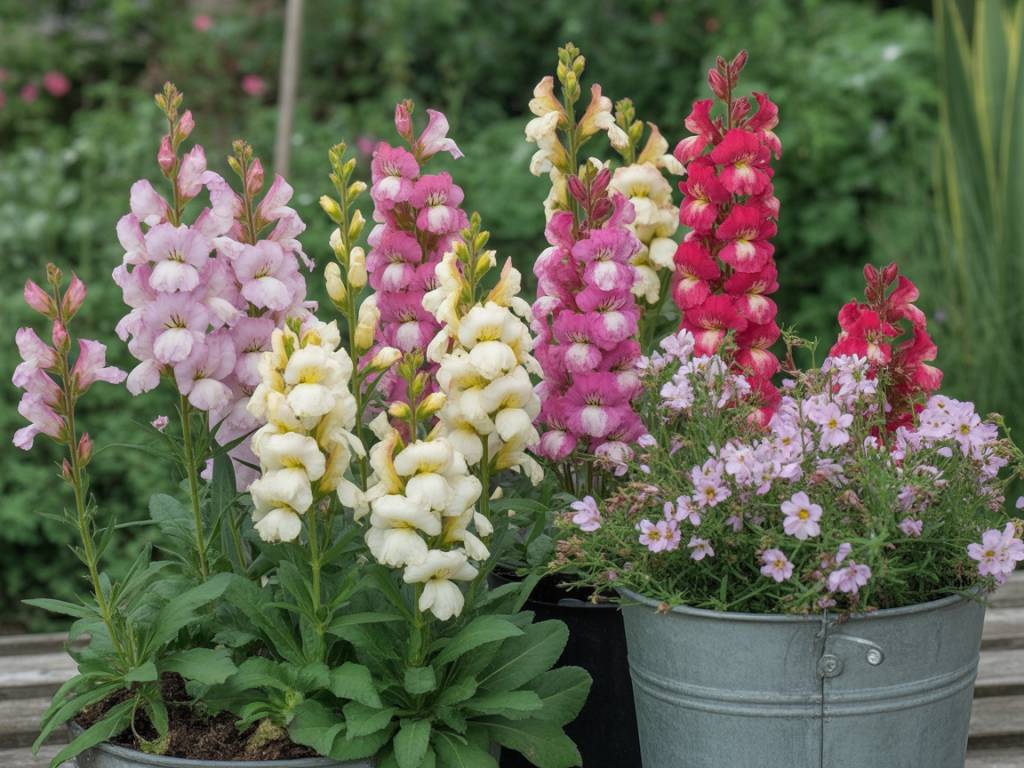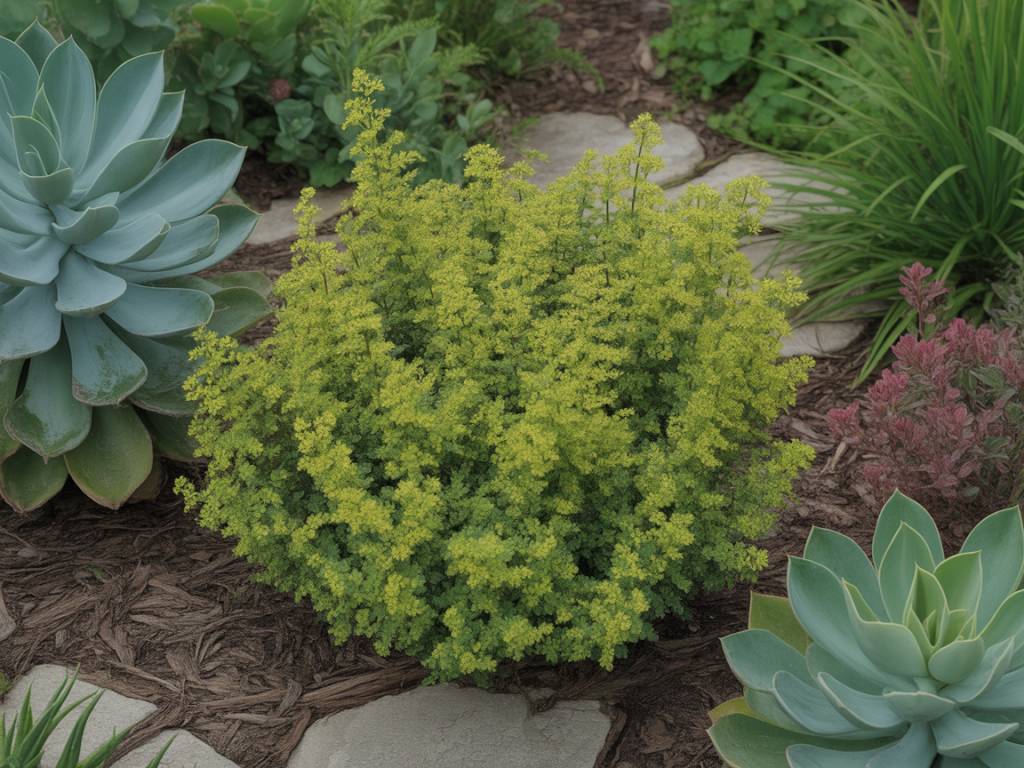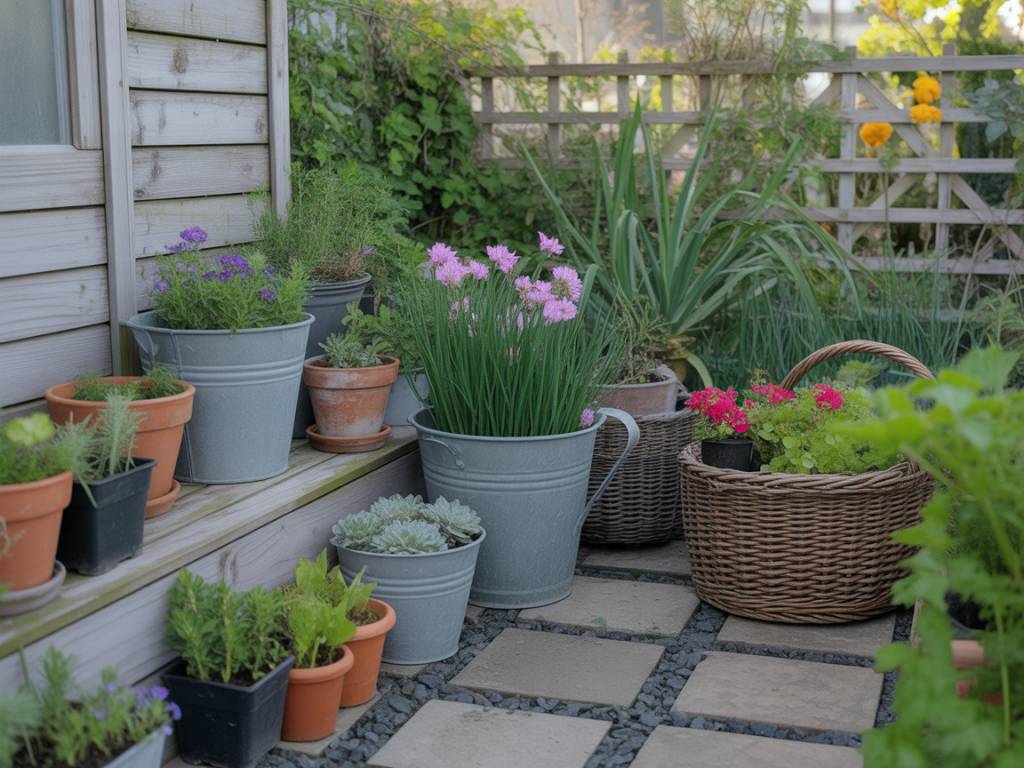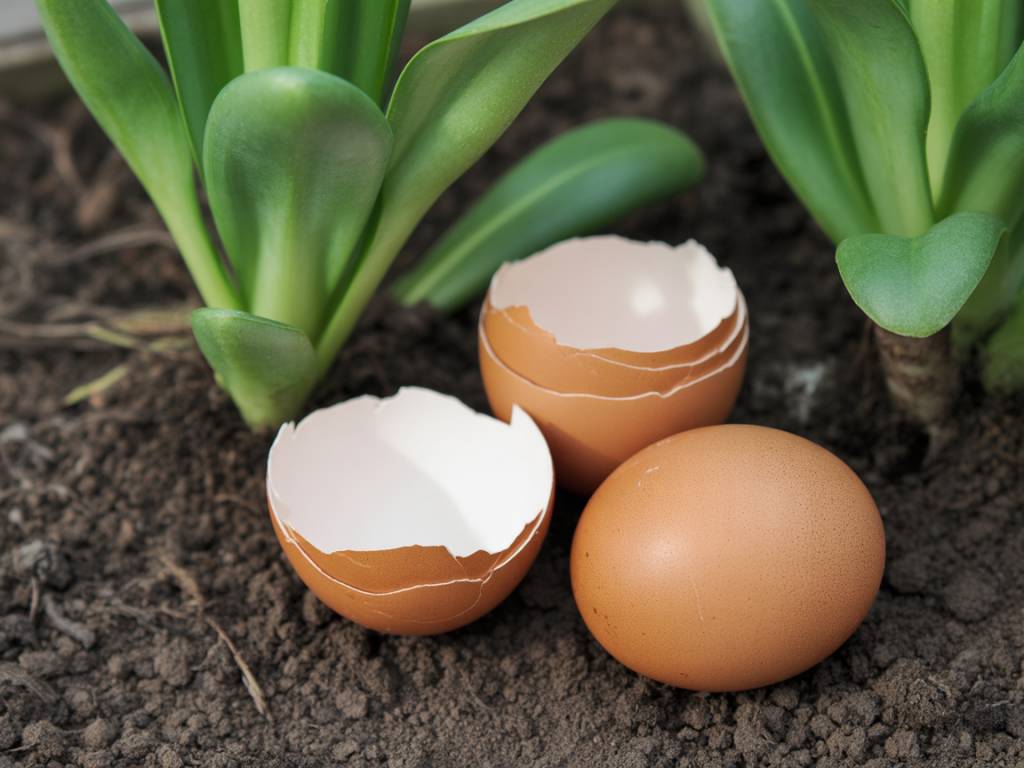Some flowers feel as if they were created especially for cottage gardens. Antirrhinums – better known as snapdragons – are certainly among them. With their playful “dragon mouths”, delicious scent and generous flowering habit, they slip as easily into a romantic border as they do into a simple clay pot by the back door.
Let’s wander together through a few ideas to weave antirrhinums into your borders and containers, so your garden can hum with colour, bees, and that gentle cottage charm all season long.
Why antirrhinums belong in every cottage-style garden
Antirrhinums bring several qualities that fit perfectly with a relaxed, cottage look:
- Long flowering season – from late spring right through to the first autumn frosts.
- Romantic, old-fashioned feel – many of us remember them from grandparents’ gardens.
- Bees adore them – especially bumblebees that know exactly how to prise open the “jaws”.
- Flexible habit – from tiny edging varieties to statuesque spires for the back of the border.
- Excellent cut flowers – they last well in a jug on the kitchen table.
In other words: they offer both heart and hard-working reliability. Just what a cottage garden needs.
Choosing the right antirrhinums for borders and pots
Before planting, it helps to understand three key choices: height, colour, and fragrance.
By height (approximate ranges):
- Dwarf (15–25 cm) – perfect at the front of borders, in low edging, window boxes or small pots. Look for series like ‘Floral Showers’ or ‘Tom Thumb’.
- Medium (30–60 cm) – ideal for mixed cottage borders and medium containers. Varieties such as ‘Madame Butterfly’ or ‘Sonnet’ fit here.
- Tall (60–90+ cm) – striking spires for back-of-border planting, cutting gardens and large containers. ‘Rocket’ and ‘Liberty’ series are good examples.
By colour scheme, think about the atmosphere you want:
- Soft and romantic – pale pinks, creams, peach and soft lemon. Pretty with roses, lavender and blue campanula.
- Country kitchen cheerful – mixed packets with reds, yellows, oranges and magentas, tumbling together like a patchwork quilt.
- Moody vintage – richer shades: burgundy, bronze, deep plum and dusky rose. Beautiful with dark foliage and coppery grasses.
- White and pastel – ideal if you want a calming, evening-friendly palette that glows at dusk.
By fragrance, not all antirrhinums are equal. Some modern varieties have been selected especially for scent. If you dream of cutting stems for the house, look for those labelled as “highly scented” – they’ll reward you twice: in the border and in the vase.
Cottage-style border ideas with antirrhinums
Cottage borders are all about abundance and gentle disorder that’s secretly well planned. Antirrhinums play several roles beautifully.
Create soft colour drifts
Instead of planting one of each variety in a strict line, tuck antirrhinums into the border in loose, repeating drifts. This brings the eye gracefully from one end of the bed to the other.
For example:
- Use a tall, soft pink antirrhinum repeated three times along the back of the border.
- Thread a shorter white or lemon variety further forward, echoing the colour and linking the planting together.
- Fill gaps between with airy companions like cosmos, larkspur or feathery dill for texture.
The key is to avoid rigid blocks. Cottage gardens whisper rather than shout, and repetition in soft waves feels more natural.
Use dwarf antirrhinums as a front-of-border ribbon
If you like a border that looks “finished” without being formal, a low edging of dwarf antirrhinums works beautifully.
Try planting a narrow ribbon along a path or in front of taller perennials:
- Choose a single colour for a classic, calm look – for instance, all white or all soft pink.
- Or opt for a cheerful mix near the vegetable patch or by the front gate, as if the flowers are there to greet your guests.
- Space plants closely (about 15–20 cm apart) so they knit into a colourful band by early summer.
This edging will keep blooming as you pass with your watering can and basket, making even everyday garden tasks feel a little more special.
Plant tall spires as romantic backdrops
Tall antirrhinums make wonderful “vertical punctuation” at the back of a cottage bed. Their strong lines stop the border from feeling too woolly, and they frame softer plants like a picture.
Try these ideas:
- Behind roses – plant tall, pastel antirrhinums behind old-fashioned shrub roses. As the roses flush and rest, the snapdragons quietly keep the colour going.
- With foxgloves and delphiniums – mix spires of snapdragons among foxgloves, lupins or delphiniums for a layered vertical tapestry.
- Against a fence – a row of tall antirrhinums in front of a plain fence or wall immediately softens hard lines.
In windy spots, it’s worth popping in a discreet bamboo cane when planting tall varieties, so they grow up supported and don’t flop just as they reach their peak.
Colour themes for classic cottage borders
If you’re not sure where to start, a simple colour theme can bring instant harmony. A few tried-and-tested ideas:
- Strawberries and cream: soft red, blush pink and creamy white antirrhinums with white daisies, pale pink roses and billowy gypsophila.
- Sunset patchwork: coral, apricot and warm yellow snapdragons with calendula, bronze fennel and maroon scabious.
- Blue and blush: white and shell-pink antirrhinums twined with blue salvias, nepeta (catmint) and dusky blue cornflowers.
Once you’ve chosen a rough palette, stick to it for that particular bed. A little discipline in colour makes all the natural exuberance feel intentional.
Charming container ideas with antirrhinums
Not everyone has space for deep borders, and even large gardens benefit from pockets of colour close to the house. Containers are where antirrhinums really shine.
Gathered clay pots by the back door
Imagine a cluster of weathered terracotta pots, each with its own mini cottage garden. It’s a simple way to greet yourself every time you step outside.
- Fill one pot with medium-height white antirrhinums and trailing thyme spilling over the edge.
- In another, plant mixed pastel snapdragons with a skirt of lobelia or bacopa.
- Add a third pot with a scented herb – rosemary, mint or lemon verbena – to mingle fragrance with the flowers.
Group pots tightly so the foliage and flowers almost touch. The effect is intimate and abundant, even in a tiny space.
Romantic window boxes
Antirrhinums in window boxes bring cottage charm right up to the glass. From inside, you’ll see bees busily working at eye level.
- Choose dwarf or medium-height varieties so they don’t topple in wind.
- Combine with trailing plants – ivy-leaved geranium, creeping jenny, or trailing lobelia – for softness.
- Stick to one or two colours if the box is long; repetition looks more elegant than too many different shades all jostling for attention.
Adding a few sprigs of English lavender at the ends of the box gives a classic cottage note and scent when you open the window.
Mixed cottage planters for patios
Large containers can behave like mini borders. Choose a generous pot or half-barrel and think in layers:
- Back or centre: medium or tall antirrhinums for height.
- Middle layer: low geraniums, dianthus, or a froth of alyssum.
- Front edge: trailing plants like verbena, ivy or creeping campanula.
For a soft, dreamy look, try a pot filled with white and blush-pink snapdragons, pale blue lobelia and a fringe of silver-leaved helichrysum. Place it where you like to sit with an evening drink; the colours will glow gently as the light fades.
Vertical touches for tiny spaces
If your garden is more balcony than estate, think vertical. Antirrhinums do well in:
- Tiered plant stands, with different heights of snapdragon on each level.
- Hanging wall planters, where dwarf varieties can spill slightly over the lip.
- Narrow troughs along railings, creating a living balustrade of colour.
Because their root systems are relatively modest, snapdragons are surprisingly accommodating in slim containers, as long as they receive regular water and feeding.
Seasonal rhythm: sowing, planting and caring
Cottage gardens are all about working with the seasons. Antirrhinums fit neatly into the year’s rhythm.
Sowing and planting:
- From seed indoors: Sow in late winter to early spring in trays, barely covering the tiny seeds. They need light to germinate.
- Prick out and grow on: Once seedlings are large enough to handle, pot them up individually and grow in a bright, cool place.
- Hardening off: Introduce them gradually to outdoor conditions in spring before planting out after the risk of hard frost has passed.
- From young plants: If you prefer simplicity, buy sturdy plug plants in spring and plant directly into borders or containers.
Soil and watering:
- They like well-drained soil. In heavy clay, add compost or grit to improve drainage.
- Water new plants regularly until established; in containers, check daily in warm weather.
- A liquid feed every 2–3 weeks keeps container-grown plants blooming generously.
Deadheading and extending bloom:
- Snap off or trim spent flower spikes just above a set of healthy leaves. This encourages fresh side shoots and more blooms.
- If a plant becomes leggy, you can lightly trim it back and give it a feed; it often responds with renewed vigour.
Overwintering (depending on your climate): in milder areas, antirrhinums can behave as short-lived perennials. If you garden somewhere relatively frost-free:
- Leave the strongest plants in the ground, cutting back old flower spikes in autumn.
- Mulch lightly around the base to protect roots.
Even if they don’t survive every winter, they often self-seed a little, gifting you surprise seedlings next spring – very much in the cottage spirit.
Perfect partners: plants that love antirrhinums
Part of the joy of cottage-style planting is the way plants mingle and lean into one another. Antirrhinums look particularly lovely with:
- Roses – classic romance; the roses give structure, the snapdragons fill the gaps with colour.
- Lavender and catmint – soft, aromatic mounds at their feet, with bees weaving between them.
- Cosmos and scabious – airy, floating flowers contrast the more solid spikes of the snapdragons.
- Hardy geraniums – leafy groundcover with simple flowers that set off the more elaborate antirrhinum blooms.
- Herbs – thyme, sage, chives and marjoram all tuck happily at their feet in sunny spots, adding scent and flavour to beauty.
When choosing companions, think about contrast: tall spires with low mounds, airy flowers with solid ones, feathery foliage with broad leaves. This layered texture is what makes a cottage border feel alive and painterly.
Encouraging wildlife and creating a cutting corner
Antirrhinums are not just pretty faces; they play a role in the small dramas of garden life.
For pollinators:
- Plant them in sunny spots where bees can easily find them.
- Avoid using pesticides; let ladybirds and hoverflies handle aphids, with perhaps a gentle spray of soapy water if needed.
- Combine snapdragons with other nectar-rich flowers – verbena bonariensis, single daisies, herbs in flower – to offer a long season buffet.
For the vase:
- Cut stems early in the morning when the lower flowers are open but the top buds still tight.
- Strip leaves from the part of the stem that will sit in water to keep it fresh longer.
- Arrange with cottage favourites like sweet peas, cornflowers and garden roses for effortless bouquets.
Even a small “cutting corner” in your garden – just a metre or two – filled with antirrhinums and friends can keep the house supplied with flowers all summer.
Common little problems (and gentle solutions)
Most of the time, antirrhinums are obliging souls, but a few issues may pop up:
- Flopping stems – often due to shade or rich, soft growth. Give them more sun if you can, avoid overfeeding with high-nitrogen fertiliser, and use slender stakes for tall types.
- Aphids – a regular guest on lush growth. Encourage natural predators, and if needed, wash them off with a firm spray of water or a mild, eco-friendly soap solution.
- Poor flowering – usually from too much shade or very dry containers. Aim for at least half a day of sun and regular watering, especially in pots.
Handled kindly and observed often, most problems stay small and manageable – another lesson from cottage gardening: frequent, light attention rather than heroic rescues.
With their dragon mouths and generous hearts, antirrhinums slip naturally into every corner of a cottage-style garden – borders, pots, window boxes and even the tiniest balcony. Choose a few varieties that speak to you, tuck them among your existing favourites, and let them teach you their simple, steady rhythm of growth and bloom. Before long, you may find it hard to remember your garden without them.





